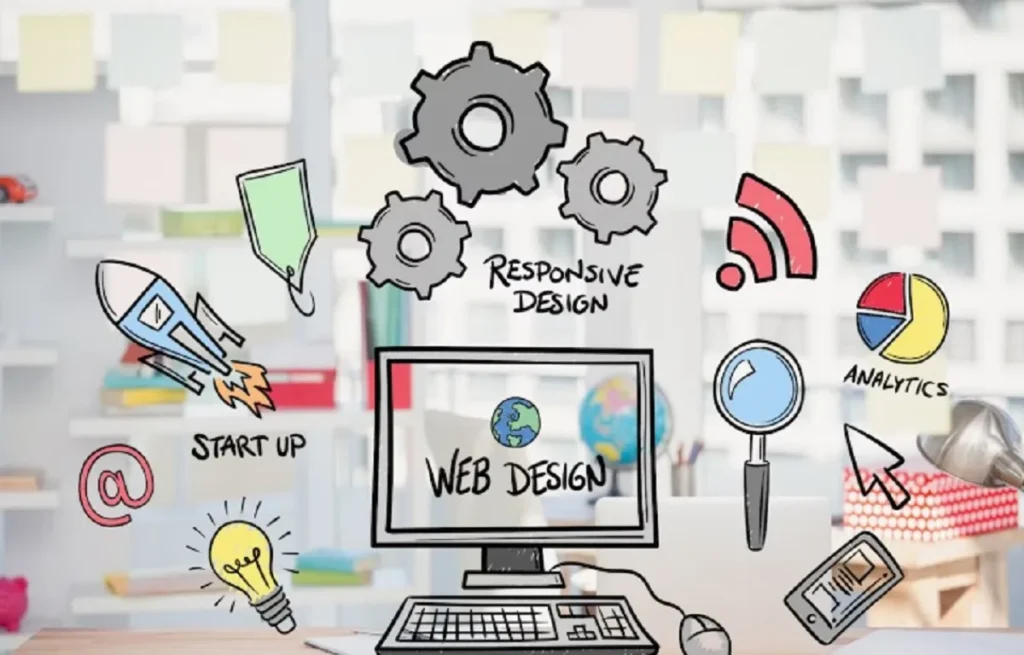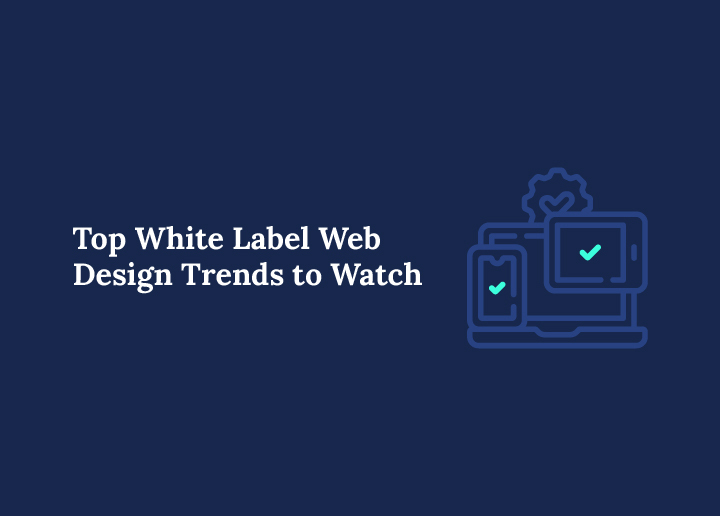Staying ahead of white label web design trends is more important than ever in 2025. Whether you’re an agency owner, freelancer, or design reseller, your clients expect fresh, modern websites that not only look great but also perform flawlessly. With so many businesses now investing in digital experiences, falling behind on design trends could cost you leads, clients, and credibility.
White label web design allows you to outsource projects under your own brand, helping you scale quickly without growing your in-house team. But to truly succeed, you need to partner with outsourcing teams who stay current with design innovation.
From AI tools and no-code platforms to mobile-first layouts and micro-interactions, this year’s design trends are reshaping how agencies deliver websites.
In this guide, we’ll break down the top white label web design trends to watch, and why staying updated is crucial for agencies, freelancers, and outsourcing partners alike.
Why White Label Web Design Trends Matter
In today’s digital-first world, clients expect more than just a nice-looking website; they want modern, fast, and responsive designs that deliver a seamless user experience across devices. If your agency isn’t keeping up with current trends, you risk delivering outdated results that don’t meet user expectations.

That’s where following white label website design trends becomes essential. When you’re offering web design for agencies or clients under a white label model, staying on top of the latest styles, tools, and technologies helps ensure you’re delivering high-quality work, every single time.
Adopting the latest trends also gives your agency a competitive edge. Whether it’s implementing dark mode, integrating AI, or using advanced UI animations, trend-aware design makes your work stand out and adds more value for clients. In turn, this helps improve client retention and opens doors for upselling and long-term partnerships.
More importantly, these trends support scalability. A good white label design provider that follows modern design practices can help you serve more clients efficiently, without compromising quality or stretching your internal resources too thin.
Keeping up with white label web design trends isn’t just about aesthetics, it’s a strategic move to keep your agency relevant, profitable, and future-ready.
Discover: Best White Label Agencies
Want to Stay Ahead of 2025’s Top Web Design Trends?
Partner with us for white label web design services and deliver cutting-edge, trend-forward websites under your brand
Top White Label Web Design Trends to Watch
As the digital space evolves, so do client expectations. Whether you’re a freelancer reselling services or an agency relying on white label design services, keeping up with the latest web design trends is essential to stay competitive. Let’s explore the key design trends shaping white label web development in 2025.
Minimalistic and Functional Design
Clean, clutter-free, and fast-loading websites are no longer optional; they’re expected. Minimalistic design focuses on essential elements, clear typography, generous white space, and intuitive navigation. For white label design services, this approach is ideal because it allows for fast delivery, easy customizations, and consistent performance across multiple projects.
Functional minimalism isn’t just visually appealing, it also improves loading speeds and boosts conversions, making it especially powerful for agencies handling multiple clients or bulk web projects.
AI-Powered Design Tools
AI is rapidly transforming the way we build websites. From generating layouts based on user behavior to suggesting on-brand content and imagery, AI-powered tools are making web design faster and smarter.
When you’re outsourcing web design, especially at scale, AI tools reduce revision cycles, speed up wireframing, and ensure consistency across projects. White label providers using AI can deliver more polished designs in less time, giving your agency a productivity and profitability boost.
No-Code and Low-Code Integration
Platforms like WordPress have made it easier than ever to build complex websites without deep coding knowledge. These no-code and low-code tools are game-changers for white label workflows, enabling quicker turnarounds and better collaboration between designers and clients.
For agencies outsourcing web design, choosing partners who specialize in these tools can significantly reduce project timelines and allow for easy post-launch updates, even by non-developers.
Design Systems and Reusable Components
A well-built design system brings structure and consistency to every project. It includes reusable components like buttons, headers, and modules that follow a unified style guide. This is especially helpful for white label agencies serving multiple clients with similar branding needs.
Using reusable components not only speeds up development but also ensures visual consistency across your projects. Agencies benefit from fewer design errors, faster onboarding of new team members, and better client satisfaction.
Dark Mode and Accessibility-First Design
Dark mode has become a user favorite, offering a sleek, modern look that’s easier on the eyes, especially on mobile devices. But beyond visual appeal, accessibility-focused design is critical in 2025.
Agencies offering white label web design must prioritize WCAG compliance, keyboard navigation, and color contrast standards. Doing so ensures websites are usable by everyone, including people with disabilities, which is not only ethical but increasingly required by law.
Motion UI and Microinteractions
Small animations, like hover effects, loading transitions, or subtle feedback on clicks, create a more interactive and engaging user experience. Known as motion UI and microinteractions, these design elements add depth and personality to your websites.
When used correctly, these details make outsourced designs feel more custom and premium, helping your agency stand out even in a white label model. They also guide user behavior and improve usability without overwhelming the interface.
Headless CMS and JAMstack Adoption
Headless CMS solutions, combined with JAMstack architecture, are gaining traction for their speed, scalability, and security. This setup decouples the frontend from the backend, allowing for more flexible design and lightning-fast performance.
If you’re outsourcing web design for performance, working with white label teams that understand and implement headless CMS (like Strapi or Sanity) and static site generators (like Next.js or Gatsby) can deliver blazing-fast websites with improved SEO and UX.
Mobile-First and Responsive Everything
It’s no surprise that mobile-first design remains a priority in 2025. With over half of web traffic coming from mobile devices, a responsive design is essential, not just a bonus.
White label agencies must prioritize mobile usability from the start, ensuring every page looks and functions perfectly on all screen sizes. This includes adaptive images, fluid layouts, and thumb-friendly interactions. A mobile-first mindset also improves load times and Google rankings, making it a win-win for both agencies and clients.
Discover: Responsive Design Beyond Mobile
How These Trends Impact White Label Agencies
Following the latest white label web design trends isn’t just about delivering visually impressive websites, it’s about strengthening your agency’s operations from the inside out.

First, embracing new design trends increases efficiency for resellers and agencies. Trends like reusable components, AI design tools, and low-code platforms reduce turnaround time, which means you can deliver more projects without overloading your team. This streamlined workflow is especially beneficial for agencies managing multiple clients or high-volume white label requests.
Second, staying updated with trends helps differentiate your service offerings in a competitive market. Many agencies offer web design, but not all offer mobile-first, accessibility-compliant, motion-enhanced, or AI-integrated solutions. By adopting these innovations, you stand out and deliver more value, helping you attract and retain clients more easily.
Lastly, these trends ensure your design output meets modern user expectations. Today’s users are tech-savvy. They expect smooth animations, responsive layouts, dark mode options, and blazing-fast performance. If your white label design partner isn’t delivering these features, your clients may start looking elsewhere.
Keeping up with trends empowers your agency to scale faster, improve customer satisfaction, and build long-term relationships, all while maintaining your own branding through white label delivery.
Choosing a White Label Web Design Partner That Stays Updated
To truly deliver high-quality websites that reflect the latest standards, it’s essential to team up with a white label web design company that stays current with industry shifts. The design world moves fast, trends like AI integration, motion UI, and no-code development aren’t just buzzwords; they’re shaping client expectations.
If your outsourcing partner is still using outdated practices or ignores key trends like mobile-first layouts or accessibility, your agency risks delivering underwhelming results. The right outsourcing partner not only helps you scale but also strengthens your reputation by producing future-ready websites your clients will love.
Here’s what to look for when evaluating a potential partner:
- Trend Awareness: Your white label partner should proactively follow industry blogs, attend webinars, and update their internal design systems to align with current web standards. Are they offering solutions like AI-assisted design, performance optimization through JAMstack, or accessibility-first practices?
- Portfolio Diversity: A good white label web design company will showcase a wide variety of website styles, industries, and features. Look for modern design techniques like microinteractions, minimalist interfaces, and responsive layouts across their projects. A diverse portfolio reflects adaptability, a must for white label work.
- Tool Proficiency: The best partners are fluent in today’s top design and development tools. This includes no-code builders like Webflow, Framer, and Elementor, as well as familiarity with Figma for collaborative UI/UX work. Ask about version control systems, design systems, and their workflow efficiency.
- Scalability and Reliability: Can they handle a sudden increase in workload without sacrificing quality or timelines? Your agency needs a partner that can scale with your client’s demands. Scalability includes having a structured team, project managers, and a consistent QA process.
- Proven White Label Experience: Working under another brand isn’t the same as regular freelance work. A solid white label design partner should understand branding guidelines, meet non-disclosure requirements, and seamlessly integrate into your project pipeline. Look for white label-specific case studies or testimonials from other agencies.
Key Questions to Ask Before Partnering
Asking the right questions upfront can save your agency from future headaches. Here are some must-ask questions:
- Do you follow current web design trends and update your workflow accordingly?
This tells you how proactive they are about continuous improvement. - Can you build sites using no-code or low-code platforms if needed?
Flexibility in tools allows for quicker delivery and better customization. - How do you ensure accessibility and mobile responsiveness?
Accessibility is no longer optional. Their process should include WCAG checks and mobile UX testing. - Will the designs be fully white-labeled under our agency’s brand?
They should be comfortable delivering assets with no visible branding, following your brand tone and visual identity. - What collaboration tools and communication methods do you use?
Efficient communication is key in outsourced relationships. Look for usage of tools like Slack, Trello, ClickUp, or Asana.
Best Practices for White Label Web Design
To ensure consistency, efficiency, and client satisfaction, following best practices is critical, especially when delivering websites under another brand. Whether you’re managing a few clients or scaling your agency with a white label web design company, these tips will help you deliver quality every time.

Always Use Client Branding Guidelines
Every client has a unique identity. Before starting any white label project, collect and follow their branding assets, logos, color palettes, fonts, tone of voice, and imagery styles. Applying consistent branding builds trust and makes the site feel genuinely tailored. This is especially important in white label web design, where maintaining the illusion of in-house work is key.
Keep Feedback Loops Tight and Documented
Smooth collaboration is everything in outsourcing. Set clear feedback timelines and preferred communication channels. Whether you’re using Slack, Trello, or ClickUp, make sure feedback is centralized and well-documented. This minimizes confusion, reduces revision rounds, and ensures that both you and your right outsourcing partner are always aligned.
Maintain Modular Design Systems for Reusability
A modular approach to design, using reusable components like buttons, cards, and navigation bars, can speed up future projects and maintain consistency. A solid design system helps white label teams deliver scalable, easy-to-update websites without reinventing the wheel. This not only improves turnaround time but also keeps your projects uniform across different clients.
These best practices ensure that your white label web design services remain professional, efficient, and high-impact, no matter how many clients you serve or how fast your agency grows.
Know: New Web Design Trends
Final Thoughts
As the digital world becomes more competitive, keeping up with white label web design trends is no longer optional, it’s a strategic advantage. From AI-powered tools and no-code platforms to accessibility-first and mobile-responsive designs, the trends of 2025 are reshaping how agencies deliver value.
By staying ahead of these trends, your agency becomes more agile, scalable, and future-proof. You’ll not only meet client expectations, you’ll exceed them. The result? Faster project deliveries, better results, and long-term client relationships built on trust and innovation.
If you’re ready to elevate your web design services without the overhead of an in-house team, it’s time to partner with a trend-forward white label design provider. The right team will help you deliver cutting-edge websites under your brand, saving time, reducing stress, and fueling your agency’s growth.



